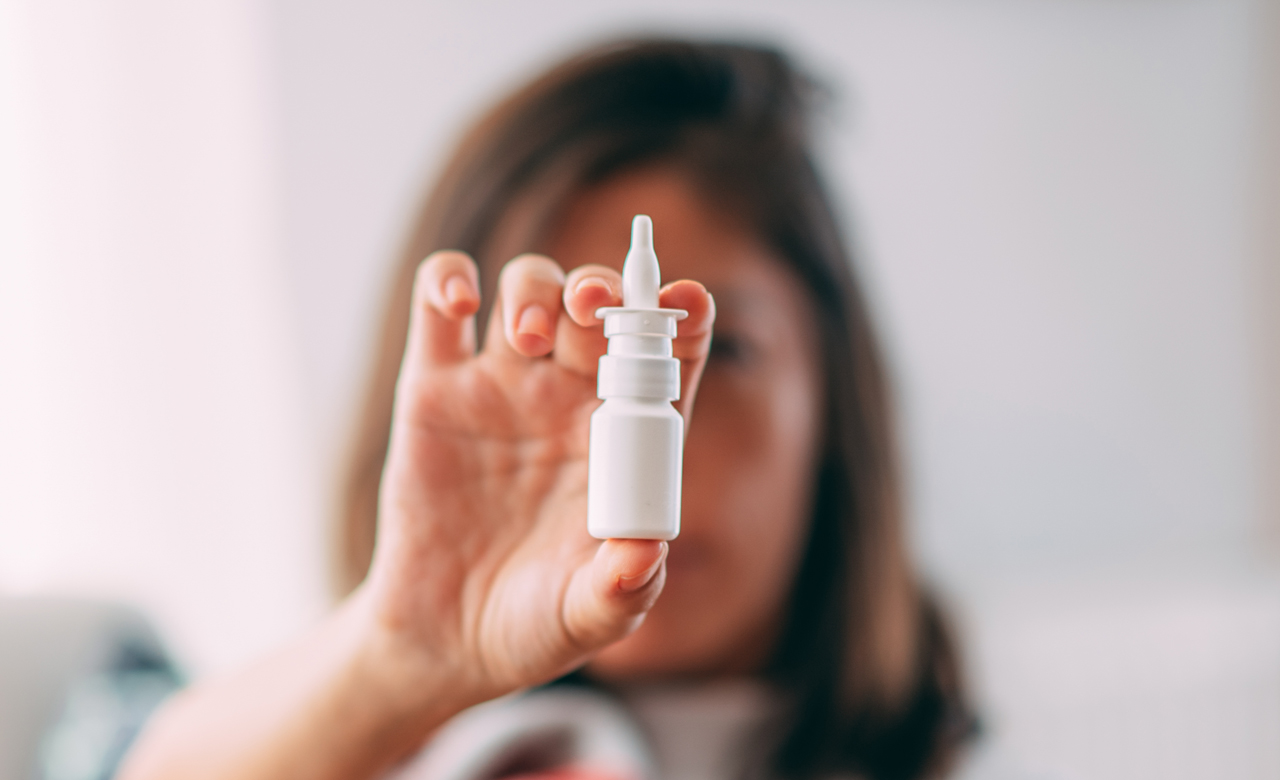Lauren Howell, PharmD

In March of this year, FDA approved the first and only calcitonin gene–related peptide (CGRP) receptor antagonist nasal spray for the acute treatment of migraine with or without aura in adults. This approval is a major breakthrough for individuals with migraine who prefer not to use oral medications.
Recommended dosage and how it works
Zavzpret (zavegepant–Pfizer) is a CGRP receptor antagonist, but the relationship between pharmacodynamic activity and the mechanism by which zavegepant exerts its clinical effects is unknown. While indicated for the acute treatment of migraine, it should not be used for the preventative treatment of migraine. The recommended dose is 10 mg given as a single spray in one nostril as needed. The maximum dose in a 24-hour period is 10 mg, so no more than one spray should be administered in that time frame. The safety of treating more than eight migraines in a 30-day period has not been established.
Adverse effects
Use of Zavzpret is contraindicated in patients with a history of hypersensitivity reaction to zavegepant or to any of the components of Zavzpret. If a serious hypersensitivity reaction occurs, discontinue Zavzpret and initiate appropriate therapy. Reactions including facial swelling and urticaria have occurred. The most common adverse reactions in patients being treated with Zavzpret were taste disorders, nausea, nasal discomfort, and vomiting. Avoid use with drugs that inhibit or induce OATP1B3 or NTCP transporters. Avoid use of intranasal decongestants; if this is unavoidable, administer intranasal decongestants at least 1 hour after Zavzpret administration. Avoid use in patients with severe hepatic impairment and with a creatinine clearance of <30 mL/min.
Clinical trials
The efficacy of Zavzpret for the acute treatment of migraine with or without aura in adults was demonstrated in two randomized, double-blind, placebo-controlled trials. In both studies, patients were instructed to treat a moderate to severe migraine with Zavzpret. Other medications such as NSAIDs, acetaminophen, or an antiemetic were allowed to be used as long they were administered 2 hours after the initial treatment with Zavzpret. Other forms of rescue medications such as triptans were not allowed during the 48 hours following initial treatment.
In both studies, patients were randomized and either received a single dose of Zavzpret or placebo. Efficacy was demonstrated with Zavzpret 10 mg by an effect on the coprimary endpoints of pain freedom and most bothersome symptom freedom at 2 hours after a single dose, compared to placebo. The percentage of patients achieving headache-pain freedom and most bothersome-symptom freedom 2 hours after a dose was statistically significantly greater in patients who received Zavzpret than those who received placebo.
Patient counseling
Patients should be counseled on the correct way to administer Zavzpret. Each device delivers a single dose and provides one spray that should be delivered into one nostril. The device contains a spray nozzle that should be inserted into the nose and a plunger that to be pressed with the thumb.
Patients should not remove the device from the blister packaging until they are ready to use it. The device should not be primed, and the plunger should not be pressed before dosing. If the plunger is pressed prior to administration, the spray will be lost and the device will no longer function.
Patients should be advised not to spray a dose into more than one nostril, as only one dose should be used in 24-hour period. Patients should be advised to gently blow their nose before administering the dose. Once the dose is administered, it is important that the individual keeps their head level and upright for 10–20 seconds. If the patient feels a drip from their nose, they should gently sniff so that none of the dose is lost. After administration, the used device should be thrown away. ■